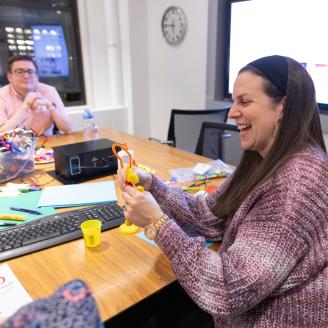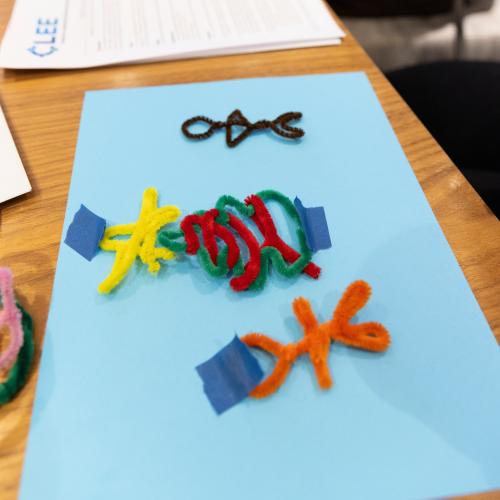
How can teachers best accommodate students with Autism Spectrum Disorder (ASD) or Attention Deficit Hyperactive Disorder (ADHD)?
The first step may be creating inclusive learning environments that promote a culture of respect and acceptance for all learners.

“A Deeper Look at ASD and ADHD: Advocacy and Allyship,” an MƒA PLT co-led by MƒA Master Teachers Laura Brando and Rachel Mushell, informed participants about the unique biology and prevalence of these conditions while promoting advocacy and allyship for impacted students. “For me, this course felt like a starting point in making a bigger impact for neurodivergent learners in our communities," said Laura. "Participants started the course by connecting with just each other and ended by brainstorming how to reach broader audiences."
MƒA teachers delved into research on ASD and ADHD, grounded in texts and podcasts from authors Barry M. Prizant, Ph.D. and Russell A. Barkley, Ph.D., as well as testimonials from individuals with these disorders. "The takeaways from this course were both tangible and intangible," said Rachel. "Teachers created classroom resources and guides for fellow educators and caregivers that promote inclusivity for these students yet many of the most significant outcomes came from rich group discussions."
Laura and Rachel intentionally designed the PLT with sensory needs in mind. Activities at the start of each session encouraged participants to make creations using tactile materials to express themselves in non-verbal ways. This showcased ways teachers could work with students to alleviate stress and anxiety while increasing focus. They also explored the Universal Design of Learning, a framework developed to improve and optimize teaching and learning for all people based on scientific insights into how humans think. Teachers learned about curricula focused on three networks: the why, what, and how of learning, and the accompanying three principles: engagement, representation, and action and expression.
Throughout the course the group discussed how society has and still treats people with ASD and ADHD and how often that behavior comes from a place of neurotypical viewpoints. Some participants shared personal experiences and many began to plan modified lesson plans to meet the needs of their specific students. Added Rachel: "I forged many new relationships within this group and learned so much from the breadth of knowledge shared by all."

Activities at the start of each session encouraged participants to make creations using tactile materials to express themselves in non-verbal ways.

This showcased ways teachers could work with students to alleviate stress and anxiety while increasing focus.